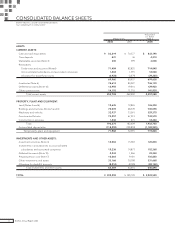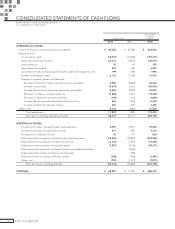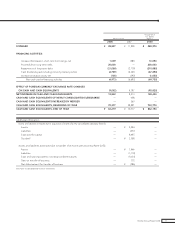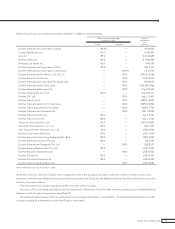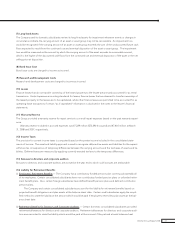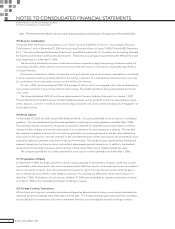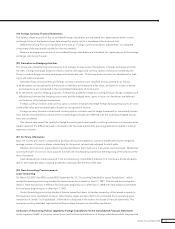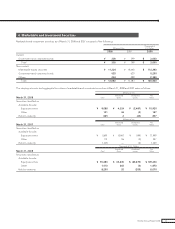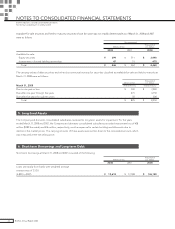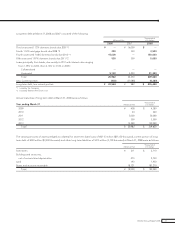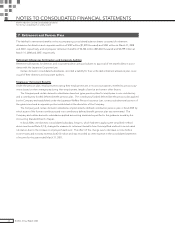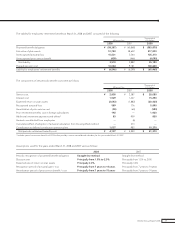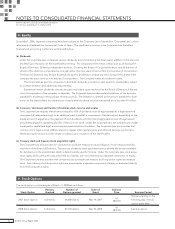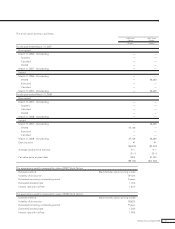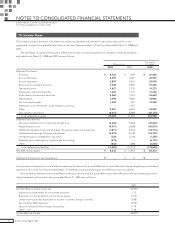Brother International 2008 Annual Report Download - page 24
Download and view the complete annual report
Please find page 24 of the 2008 Brother International annual report below. You can navigate through the pages in the report by either clicking on the pages listed below, or by using the keyword search tool below to find specific information within the annual report.
22 Brother Annual Report 2008
NOTES TO CONSOLIDATED FINANCIAL STATEMENTS
Brother Industries, Ltd. and Consolidated Subsidiaries
For the Years ended March 31, 2008 and 2007
date. The retirement benefits for directors and corporate auditors are paid upon the approval of the shareholders.
(15) Business Combination
In October 2003, the Business Accounting Council (“BAC”) issued a Statement of Opinion, “Accounting for Business
Combinations”, and on December 27, 2005 the Accounting Standards Board of Japan (“ASBJ“) issued ASBJ Statement
No.7, “Accounting Standard for Business Divestitures”, and ASBJ Guidance No.10, “Guidance for Accounting Standard
for Business Combinations and Business Divestitures”. These new accounting pronouncements were effective for fiscal
years beginning on or after April 1, 2006.
The accounting standard for business combinations allows companies to apply the pooling of interests method of
accounting only when certain specific criteria are met such that the business combinations is essentially regarded as a
uniting-of-interests.
For business combinations that do not meet the uniting-of-interests criteria, the business combination is considered
to be an acquisition and the purchase method of accounting is required. This standard also prescribes the accounting
for combinations for entities under common control and for joint ventures.
On July 1, 2006, the Group acquired 100% of the shares of JAX Inc. which was engaged in the network karaoke busi-
ness and accounted for it by purchase method of accounting. The related goodwill is being systematically amortized
over 7 years.
The Group transferred 100% of its at-home sales business to Yamano Holdings Corporation on January 1, 2007.
The transferred at-home sales business included related net assets such as goodwill, inventories, leasing assets, equip-
ments, deposits, customer / vender business relationships and shares of a wholly owned subsidiary which engaged in at-
home sales business.
(16) Stock Options
On December 27, 2005, the ASBJ issued ASBJ Statement No.8, “Accounting Standard for Stock Options” and related
guidance. The new standard and guidance are applicable to stock options newly granted on and after May 1, 2006.
This standard requires companies to recognize compensation expense for employee stock options based on the fair
value at the date of grant and over the vesting period as consideration for receiving goods or services. The standard
also requires companies to account for stock options granted to non-employees based on the fair value of either the
stock option or the goods or services received. In the consolidated balance sheet, stock options are presented as stock
acquisition rights as a separate component of equity until exercised. The standard covers equity-settled, share-based
payment transactions, but does not cover cash-settled, share-based payment transactions. In addition, the standard
allows unlisted companies to measure options at their intrinsic value if they cannot reliably estimate fair value.
The Company applied this accounting standard for stock options to those granted on and after May 1, 2006.
(17) Presentation of Equity
On December 9, 2005, the ASBJ published a new accounting standard for presentation of equity. Under this account-
ing standard, certain items which were previously presented as liabilities or assets, as the case may be, are now present-
ed as components of equity. Such items include stock acquisition rights, minority interests, and any deferred gain or
loss on derivatives accounted for under hedge accounting. This standard was effective for fiscal years ending on or
after May 1, 2006. The balances of such items as of March 31, 2006 were reclassified as separate components of equity
as of April 1, 2006 in the consolidated statement of changes in equity.
(18) Foreign Currency Transactions
All short-term and long-term monetary receivables and payables denominated in foreign currencies are translated into
Japanese yen at the exchange rates at the balance sheet date. The foreign exchange gains and losses from translation
are recognized in the statements of income to the extent that they are not hedged by forward exchange contracts.


